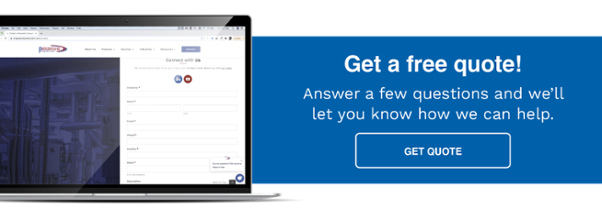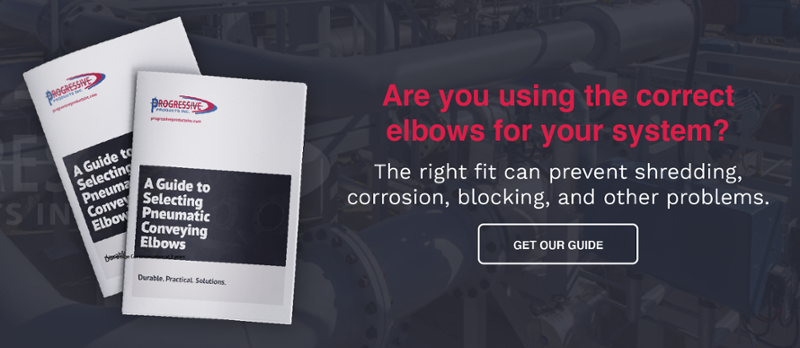Transition issues in pneumatic conveying systems are not uncommon, but there are things you can do to understand why they’re happening and then put measures in place to prevent them.
First, to ensure good flow of product, tackling common issues found in pneumatic conveying systems like wear, pile-up, and friability are important things to consider in reaching a consistent conveying air velocity.
It is primarily when moving product around bends and through elbows that the most common transition issues occur.
What Does Transition Mean in Pneumatic Conveying?
This is tricky when there are transitions along the pipe, such as when product moves around bends, through pipes of different diameters, and across couplings. All of these things are known as transitions because the product is moving from one section of pipe to a different section of pipe.
What are the Most Common Transition Issues?
There are some fairly common transition issues in pneumatic conveying elbows, and understanding these will help you be able to protect against them.
- There may be lips or edges on the inside of the transition that are catching products so particulates are piling up, or they’re causing wear. Edges on the inlet or outlet can also be problematic for food-grade applications as this causes a build-up of product within the elbow which leads to rotting and contamination.
- Turbulence is another significant factor. Fluctuations in the airflow cause wear either within the reducer itself or right at the reducer.
- Transitions cause both increase and reduction of air pressure, both of which pose their own unique issues.
- If you have a transition in your system that goes from a round pipe or tube through to square, or vice versa, this will ...
How to Protect Against Transition Issues
There will always be some fluctuation along the line, but there are things you can do to protect against transition issues through the elbows in your pneumatic conveying system.
First, if you’re just designing the system and it’s not 100% necessary to transition, simply don’t do it so you don’t create these types of issues for yourself.
Second, if you have a transition that’s experiencing wear or abrasion to such a high degree that you are frequently replacing elbows, consider a different type of elbow that’s more abrasion-resistant and suitable for your needs. You can find out about the different types of elbow in our guide to selecting elbows for your pneumatic conveying system.
You could also consider designing a transition that has roughly the same profile on either end in terms of area. This means you won’t create a pressure drop, although you still may have a turbulence issue.
Lastly, investigate the best type of reducer for your system - either concentric or eccentric. Eccentric reduction is typically used as it’s thought to give a better wear pattern as it streamlines the airflow by bringing a larger flow down into one flow point. However, the geometry of an eccentric reducer is asymmetrical meaning that you’ll get an asymmetrical flow which will impact air velocity and pressure. What you’re ideally looking for is uniform velocity and pressure. Using a concentric reducer can provide this uniformity.
If you would like to discuss transition issues or need help in selecting the right elbows for your pneumatic conveying system, it’s best to talk with an expert so you can ensure you get the correct components for your needs.
At Progressive Products, we won’t sell you anything you don’t need – we’ll sell you the best solution that’s right for your individual system. Contact us today to find the right solution for you.



